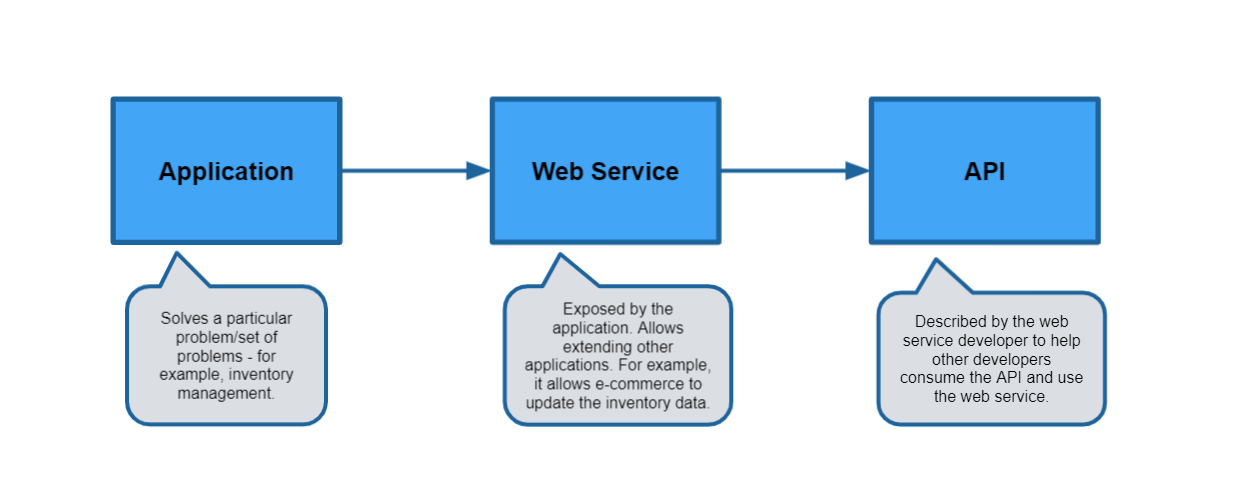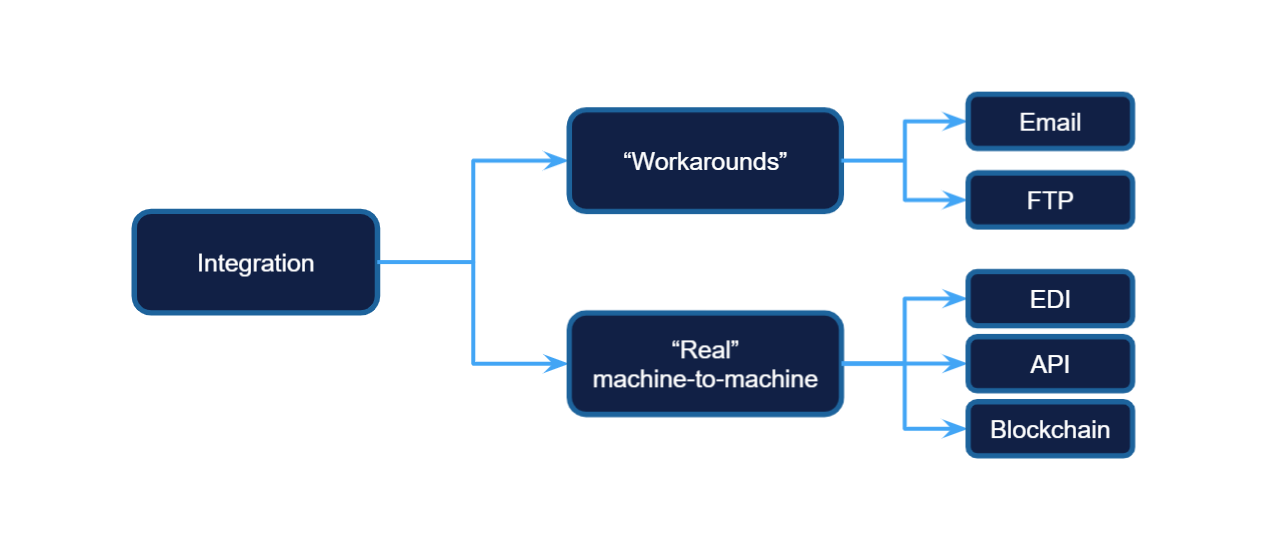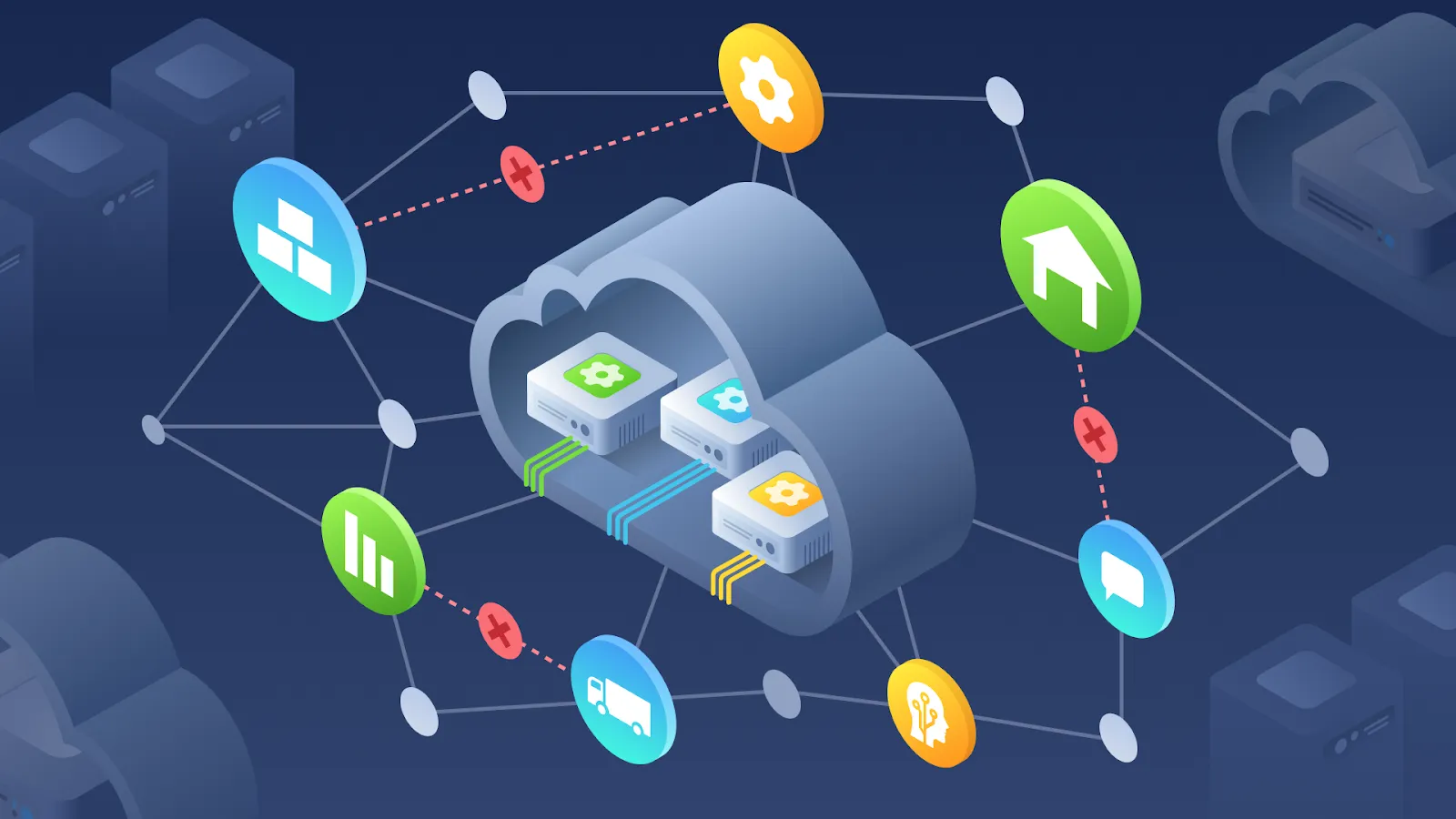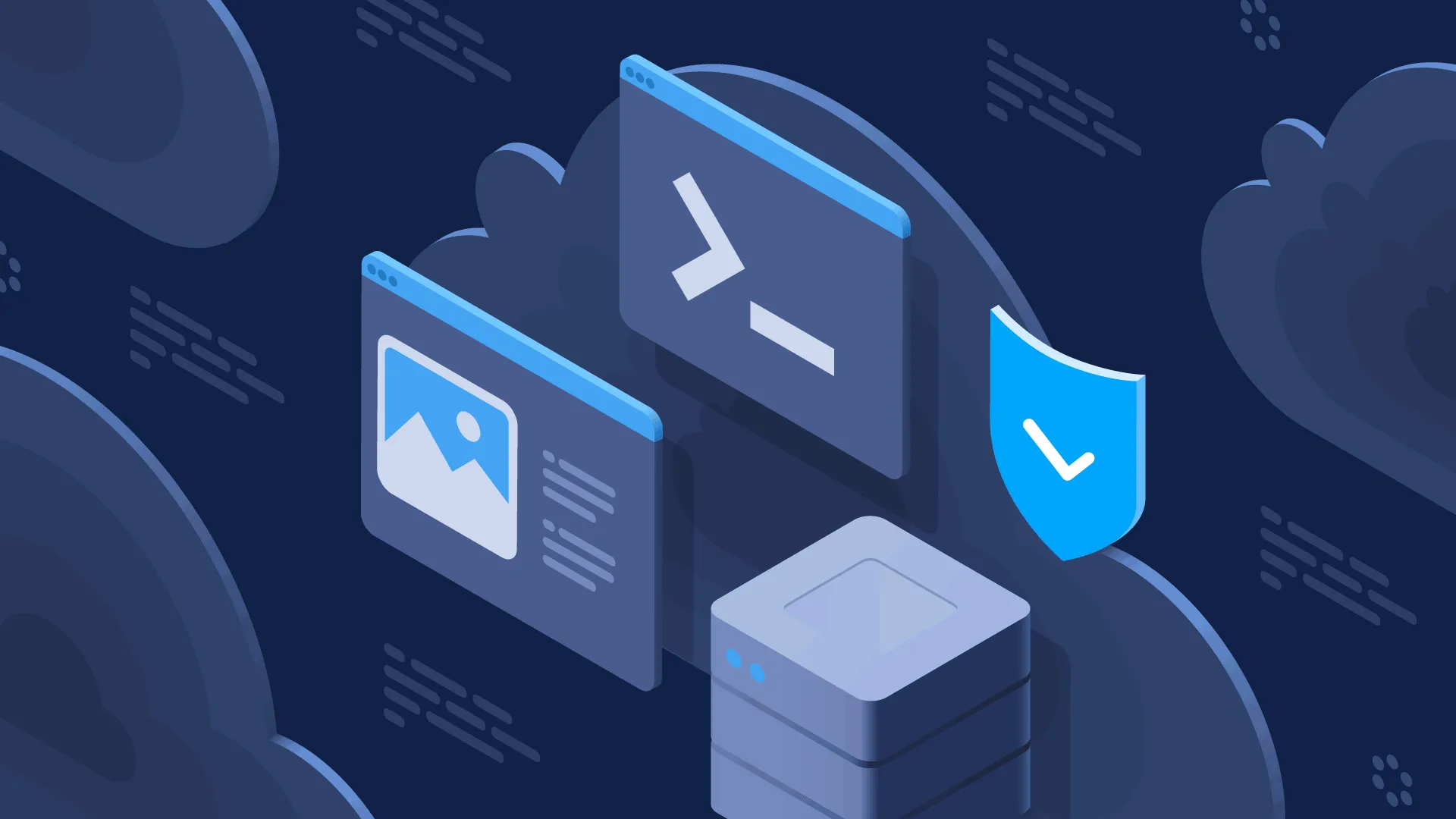In the modern competitive age, when organizations intend to stay ahead of the market, they require their systems and software applications to work synchronously and perform as a coordinated whole. The appropriate integration provides companies with increased productivity, more efficient use of data, and new opportunities and allows core business processes to play nicely together. Thus, the use of modern integration approaches, like application programming interfaces (APIs), gain tremendous popularity thanks to their flexibility, scalability, and speed.
API is one of the key integration approaches. According to Gartner, ‘APIs complement traditional B2B technologies such as electronic data interchange and managed file transfer.’ In the case of logistics firms, API technology offers real-time, two-way connectivity and communication, which is critical for third-party logistics (3PL) providers that concentrate on improving efficiency across the existing supply chain. Therefore, it serves as a game-changer for a particular industry that depends on accurate, insightful, and actionable information.
So what is API integration? What are the other key integration approaches? And what are the main advantages and disadvantages of implementing them? Read in our blog post.
What is API integration?
API is a modern way of integrating applications. Also, it serves as a specification that describes how different software systems can interact with each other. Leading organizations are not just consuming various APIs but also expose their APIs to third parties for data exchange.
Right now, there are three commonly used API types:
- Remote procedure call (RPC). RCP is the process of invoking code on a remote machine. Because of such a generic definition, it may be difficult to distinguish which API is RPC-like and which not.
- Simple object access protocol (SOAP). SOAP is a message specification used to exchange data between systems and applications. In terms of APIs, a SOAP API is built in a more structured and formalized manner.
- Representational state transfer (REST/RESTful). REST is considered an architectural style used to design decentralized systems, and as a style, it puts several constraints on what APIs will look like. REST APIs provide guidelines for developers to follow when creating an API.
Given we have three API types (RPC, SOAP, and REST/RESTful), which one is the best for a modern software project? The answer is quite simple: virtually all modern software systems expose REST/RESTful APIs due to their simplicity in both implementation and consumption.
Besides, nowadays, most people use the acronym ‘API’ to describe a machine-to-machine communication interface via the Internet. While it is somewhat correct, it is also just half of the truth. In reality, when somebody says ‘API’, they mean ‘API of a web service X’ or ‘Web API’.
 APIs are often product-specific. Two enterprise resource planning (ERP) systems may have similar APIs which are still incompatible. Attempts to overcome this issue have been made for a while. There are at least two directions of the development:
APIs are often product-specific. Two enterprise resource planning (ERP) systems may have similar APIs which are still incompatible. Attempts to overcome this issue have been made for a while. There are at least two directions of the development:
- Defining data models and API calls for a specific industry/domain;
- Creating a universal way of describing any API (API specification tools like RAML or OpenAPI).
API use cases for logistics and supply chain companies
Today, considering the rapid digitalization and increase in e-commerce, logistics and supply chain companies are highly appreciating the potential of APIs to connect suppliers, carriers, cloud providers, and even software as a service (SaaS) applications. Thus, API-based integrations are becoming popular as they complement traditional EDI functions and provide real-time information exchange.
Here we detail some API-based integration use cases for the logistics industry:
-
**Load-tender-to-invoice. **API-based transportation management systems (TMS) allows sending load tender APIs to relevant carriers quickly. Therefore, real-time two-way communication provides the 3PLs and shippers with an opportunity to optimize the supply chain more effectively. Besides, APIs enable carriers, shippers, and 3PL partners with automated billing. That leads to reducing errors and ensuring timely payments. Finally, APIs allow passing proof of delivery (POD) documents back and forth for carriers and 3PLs.
-
Supply chain visibility. The direct connection between APIs and electronic logging device (ELD) aggregators, specific visibility providers, and mobile apps allows providing real-time updates regarding location and route tracking data.
-
Accurate spot rate data. Thanks to APIs, shippers and 3PLs can be linked to relevant carrier online services. That enables them to access the exact up-to-date spot rate data easily. Considering the technological innovations in freight management, multiple shippers intend to find the proper balance using contracted rates and spot rates. At the same time, they want to lower overall costs and stay compliant with contracted rates as it helps avoid different fines or other financial repercussions from their carriers.
-
Automated freight matching. Shippers and 3PLs can use APIs for querying numerous carriers. That provides real-time defining of the most cost-effective routing options. Years ago, freight matching was conducted by visiting all sites manually and leveraging traditional approaches like phone, email, or fax. Now, using APIs makes the whole freight-matching process much more effective due to end-to-end automation.
-
Back-end app integration. Companies can find APIs priceless for integrating back-end apps (SaaS or legacy/on-prem) smoothly into the existing digital load-tender-to-invoice process. Such integration also allows extracting up-to-the-minute spot rates in real-time, monitoring location, obtaining routing data. All of that promotes the digitization of supply chain processes. Lastly, thanks to APIs, customizability is reaching new levels. For example, by leveraging APIs, such as shipping APIs for e-commerce, companies can develop and deploy a customized extension required for supporting a particular business case effectively.
What are the other key integration approaches?
Integration approaches can be classified into two main categories: ‘workarounds’ and ‘real’ machine-to-machine, which also have some subcategories. Here we describe the key integration approaches and analyze their pros and cons:
 picture 2
Email exchange integration. Long email threads with attached Excel spreadsheets for requesting and providing quotes, submitting orders, or negotiating pricing is something we see every day. By defining a ‘standard’ structure of spreadsheets/CSV files, it is possible to automate the process of accepting orders, requesting quotes, and other similar actions.
picture 2
Email exchange integration. Long email threads with attached Excel spreadsheets for requesting and providing quotes, submitting orders, or negotiating pricing is something we see every day. By defining a ‘standard’ structure of spreadsheets/CSV files, it is possible to automate the process of accepting orders, requesting quotes, and other similar actions.
FTP file upload/download. Using files for sending data or providing reports is another popular integration pattern. Similar to email, the file transfer protocol (FTP) is a relatively old technology familiar to everyone. Unlike email, FTP (and SFTP, also secure file transfer protocol) provides more control over data transfers, including partial uploads, parallel data upload, and much more. From a technical point of view, modern file systems and operating system (OS) tools for working with files and folders are robust. That makes it possible to build sophisticated integration flows.
EDI integration. Electronic data interchange (EDI) is a concept for exchanging information present traditionally on paper via the Internet. There are separate standards of EDI created for corresponding industries (X12, EDIFACT, IATA, etc.). The main idea of the concept is that the received information will always be processed by software. Therefore, each EDI standard strictly defines available document types, their format, and rules to interpret them.
Blockchain-based integration. A blockchain is an approach for storing information to make it resistant to modifications. The data is stored in so-called ‘blocks’. Each new block contains a hash (read ‘digital fingerprint’) of a previous one. This way, all blocks are chained. Each node (computer) of a particular blockchain network holds the full copy of the blockchain. Its distributed nature combined with tampering protection makes it a promising candidate to solve the supply chain visibility issues.
Advantages and disadvantages of each integration approach
Integration approach
Advantages
Disadvantages
API integrationMachine-to-machine communication
Data formats are flexible
While there is no such thing as a single standard API for everything, there are API specification tools that help integrate with particular API
APIs can be appropriately secured
APIs are often real-time (they can also be asynchronous if needed)
It is relatively easy to ensure APIs are scalable
There are standard, domain-specific APIs (e.g., Open Banking API)
APIs are often specific to a particular software system, meaning each integration requires a separate effort
While there are API specifications and data models standards, they are not adopted by every market player
Changes in APIs require updates of the integrations
APIs should be designed appropriately to ensure an efficient integration with third parties
Email exchange integrationAllows improving existing workflows without substantial changes
Relies on the existing infrastructure
Does not force another party to invest in automation/technology upgrades
High implementation speed
Low implementation costs
Low maintenance costs
APIs are often specific to a particular software system, meaning each integration requires a separate effort
While there are API specifications and data models standards, they are not adopted by every market player
Changes in APIs require updates of the integrations
APIs should be designed appropriately to ensure an efficient integration with third parties
FTP file upload/downloadFTP can be used by humans and machines both to send and receive data
By utilizing a specific folder structure, it is possible to achieve more or less reliable data processing with success/error reports
Technology is familiar to many organizations and users
Support of partial uploads or parallel data uploads
Can be used to send/receive large amounts of data
Supported by many existing ERPs and other enterprise systems
Can provide security in transfer (by using SFTP/FTPS)
It is possible to configure fine-grained security permissions
Not suitable for real-time data exchange
Secure transfers are implemented as SFTP or FTPS - two incompatible protocols with similar names. To establish a secure connection, both the client and the server should support the same protocol
Regular maintenance of the server is required to ensure needed security patches are in place
Network firewall/router configuration may be required to allow connections
EDI integrationDesigned to allow automatic machine-to-machine communication
Data formats are strictly defined
Each request has a defined set of possible responses
Transport-agnostic (EDI messages can be delivered using virtually any communication protocol)
Possibility of implementing secure data transfers using transport layer security (TLS)
Each EDI standard can be treated as a uniform language between all participants of a particular industry
EDI is not a standard but a concept. There are many EDI standards for various industries
EDI standards are very complicated
EDI supported by many legacy systems and large enterprise systems but may not be present in modern/more lightweight solutions
Many EDI implementations are proprietary/closed-source
Because of the implementation costs, smaller organizations may not have a possibility to integrate using EDI
Blockchain-based integrationTransparency
Distributed nature reduces the chances of data loss
A wide selection of software tools, libraries, and frameworks to implement a blockchain-based solution
Ready-to-use blockchain-based databases
Too much transparency can result in loss of privacy
Private blockchain networks cannot guarantee protection against modifications
Blockchain interaction requires all parties to be in the same network. Similar to APIs, there is no single ‘standard’ blockchain implementation
Blockchain networks require substantial compute resources and are often associated with excessive CO2 emissions
Technical & business criteria for integration
Although all organizations are different, some technical criteria can be applied to any integration between software systems:
- Security. Data should be transferred and stored securely.
- Reliability. Data should be delivered to the receiving party, or the sending party should be notified it is not possible.
- **Speed. **Exchanges should happen with speed sufficient to provide uninterrupted service to end-users.
- Scalability. The integration should be able to sustain continuously growing data volumes and the increasing number of requests.
Additionally, there are shared business requirements:
- Implementation speed. The time needed to transform the current organization and implement the integration approach.
- Implementation cost. The budget needed to implement the particular approach.
- **Maintenance cost. **The budget needed to ensure the uninterrupted functioning of the integration and keeping it current.
The bottom line
When choosing an integration approach, companies should consider both advantages and disadvantages of all methods. Which one is more appropriate will highly depend on the context. For example, blockchain is quite a promising technology, though even with the current high speeds of its adoption, it may take much longer until production-ready solutions can appear. Thus, it makes sense for companies to implement APIs as they help integrate different products and systems they use efficiently.
At the same time, Gartner states that ‘consolidating APIs and integration projects into one platform unleashes the transformative power of both.’ The experts regard APIs and integration technology as intimately correlated because ‘integration technology reduces the time to value of the APIs and APIs facilitate certain aspects of integration.’ That makes APIs a highly effective approach, which brings benefits to developers, end-users, and customers.




